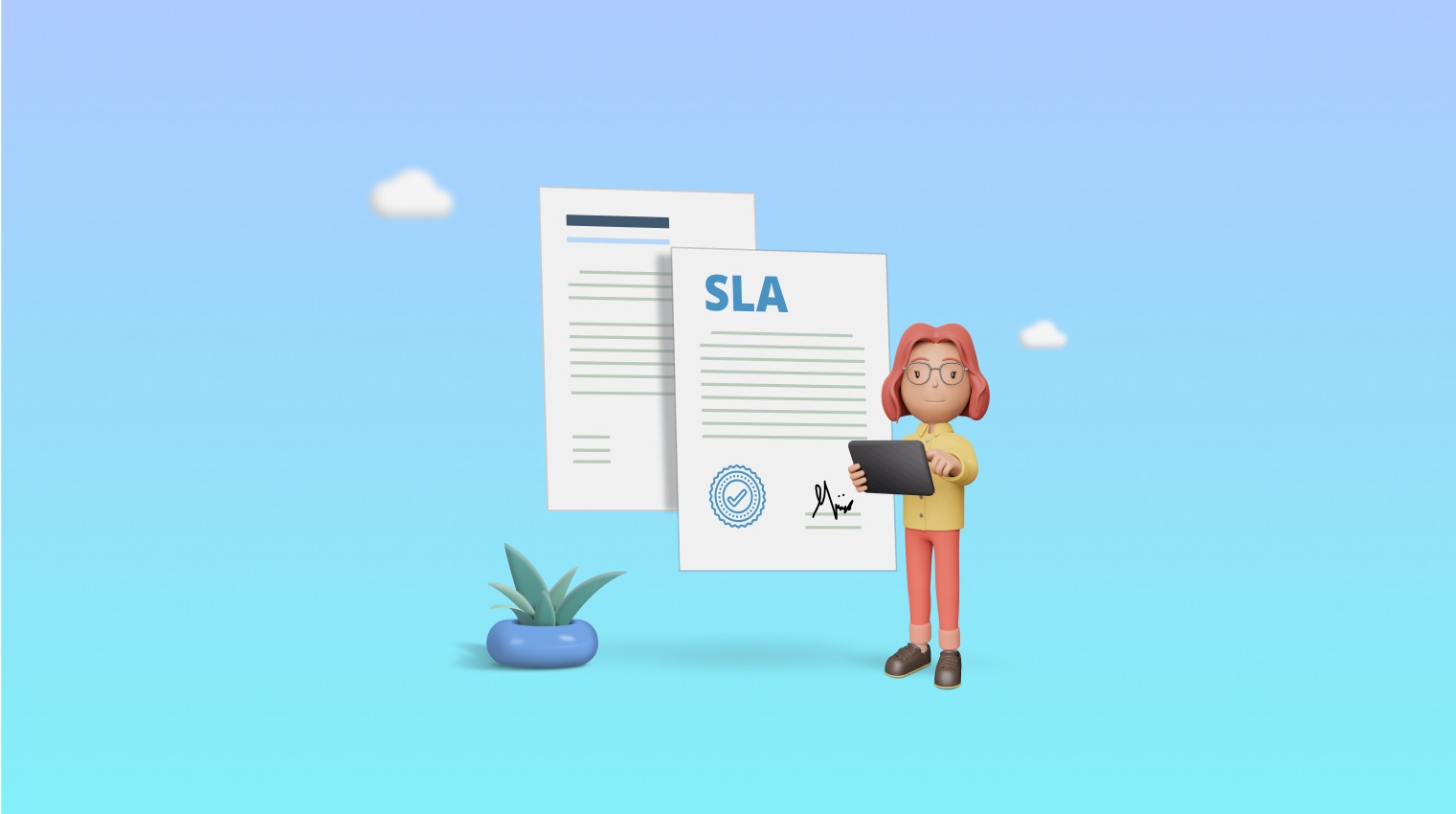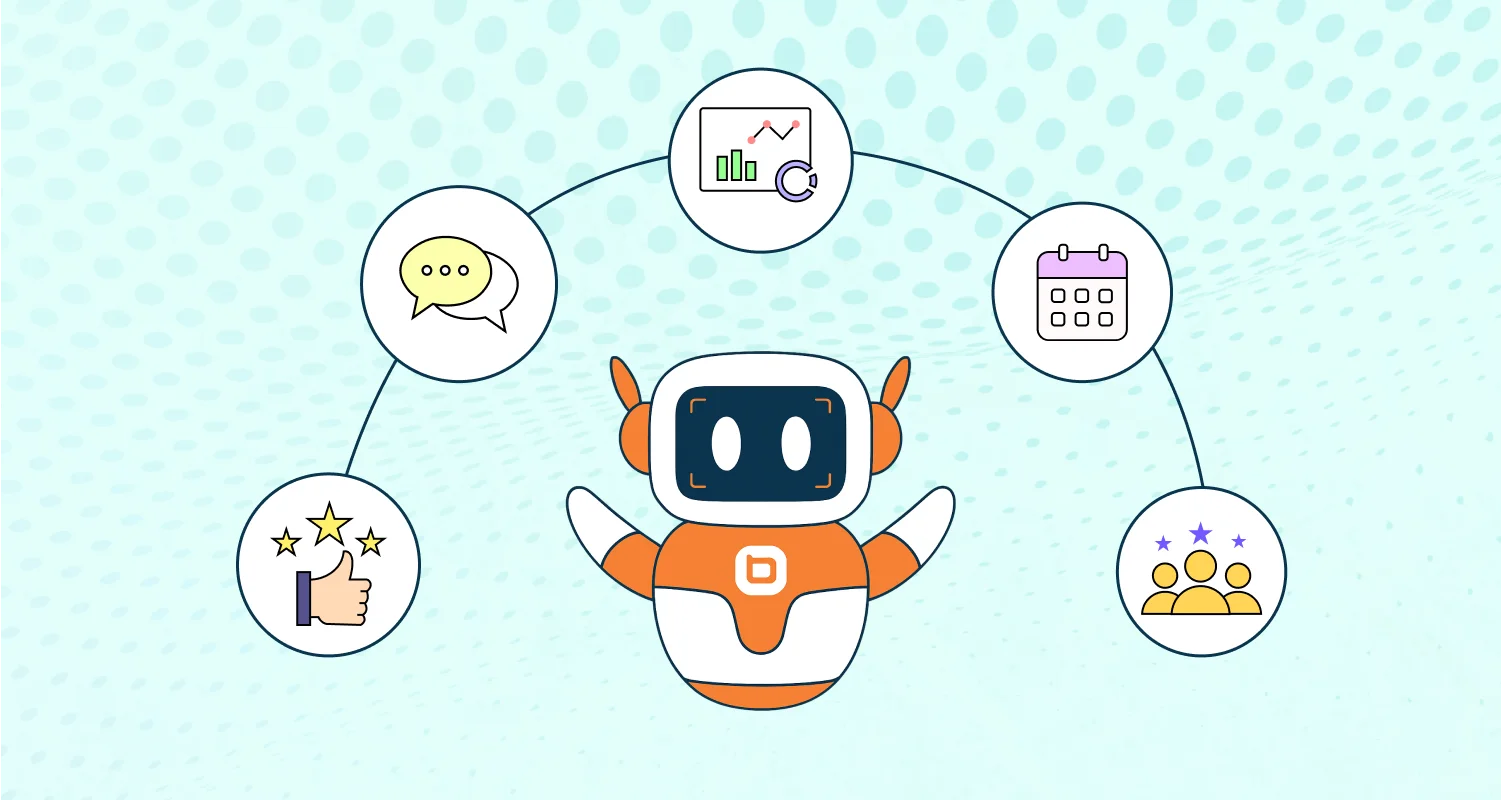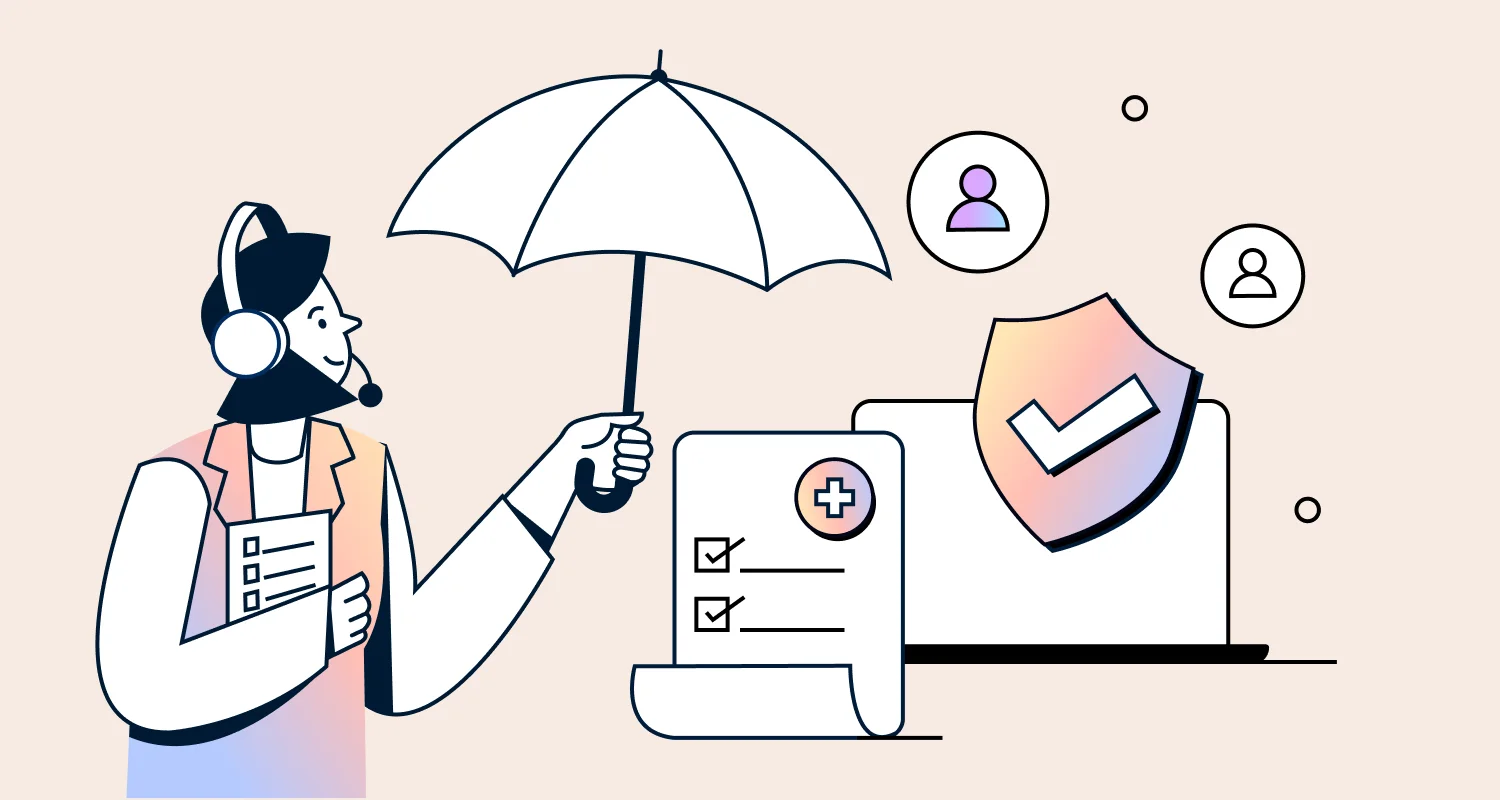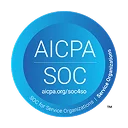Building a good relationship between clients and the support team is a strategic imperative for the success of any business.
According to research from Microsoft, 96% of consumers say customer service is important in their choice of loyalty to a brand.
The initial stage in establishing a good rapport with clients involves drafting a contract that clearly outlines the requirements and standards that both parties are expected to comply with.
In customer service, a service level agreement (SLA) is key to ensuring:
- The best customer experience.
- Improved productivity
- The growth of the company.
This blog walks you through the following topics:
- What an SLA is
- The key components of a customer service SLA
- Importance of service-based agreements
- SLA best practices
What is a Service-Level Agreement (SLA)?
A service level agreement is a documented agreement between a company and its clients. This agreement defines the services that the company will provide its customers as well as the service standards to expect from it.
In customer service, it is referred to as an agreement between the support team and the clients about the response and resolution times to expect.
It clearly defines the set target time within which a company is expected to respond to or resolve different customer issues.
Types of customer service SLAs
Service-level agreements (SLA) vary depending on the nature of the services and the provider-client relationship. Each type of agreement requires specific terms and conditions to which both parties involved must agree.
These terms often include details about services, priorities, responsibilities, guarantees, and warranties. Here are the main types:
- Customer-based SLA: This is an agreement with an individual customer or group covering all the services they use. It contains details regarding the type and quality of service that has been agreed upon.
For example, a company may have a service-based agreement with its IT provider covering all its digital services.
- Service-based SLA: This type is an agreement that pledges a specific service standard to all customers using the services provided.
For example, a telecommunication company may guarantee a specific internet bandwidth to all its customers.
- Multilevel SLA: This type is broken down into levels, each addressing different sets of customers for the same services in the same SLA. A multilevel agreement may include a component at the corporate level that is applicable to all users, along with a distinct agreement specifically designed for a particular customer group.
For example, the telecom company might offer basic services and support to all its customers, but it could also present varying price tiers that determine different levels of service.
The key components of a customer service SLA
The components of an SLA may vary based on the needs and expectations of customers. However, there are some features that are common for any type of customer SLA.
Here are some common components to include in your SLA:
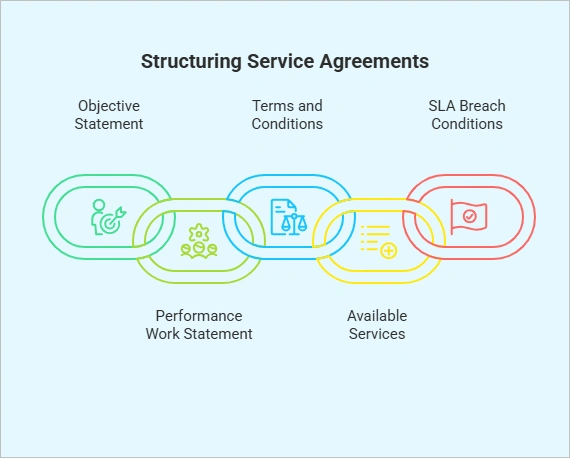
Objective statement
A service-level agreement should state the goals of both the customer support team and the customer. It clearly explains what level of service the customer expects.
The customer support team’s target is to provide consistent, high-quality service while meeting expectations.
Performance work statement
Performance standards state the expected quality of services defined by the customer. They include specific performance or service quality benchmarks.
We should measure the actual service level against these benchmarks to ensure the achievement of the SLA performance standards.
Terms and conditions
Service-level agreements must specify the terms and conditions of the service provided. For example, the customer should know the time period and frequency of service provision.
The terms and conditions should also include the minimum and maximum time allotted to a service provider to respond to a request or resolve an issue.
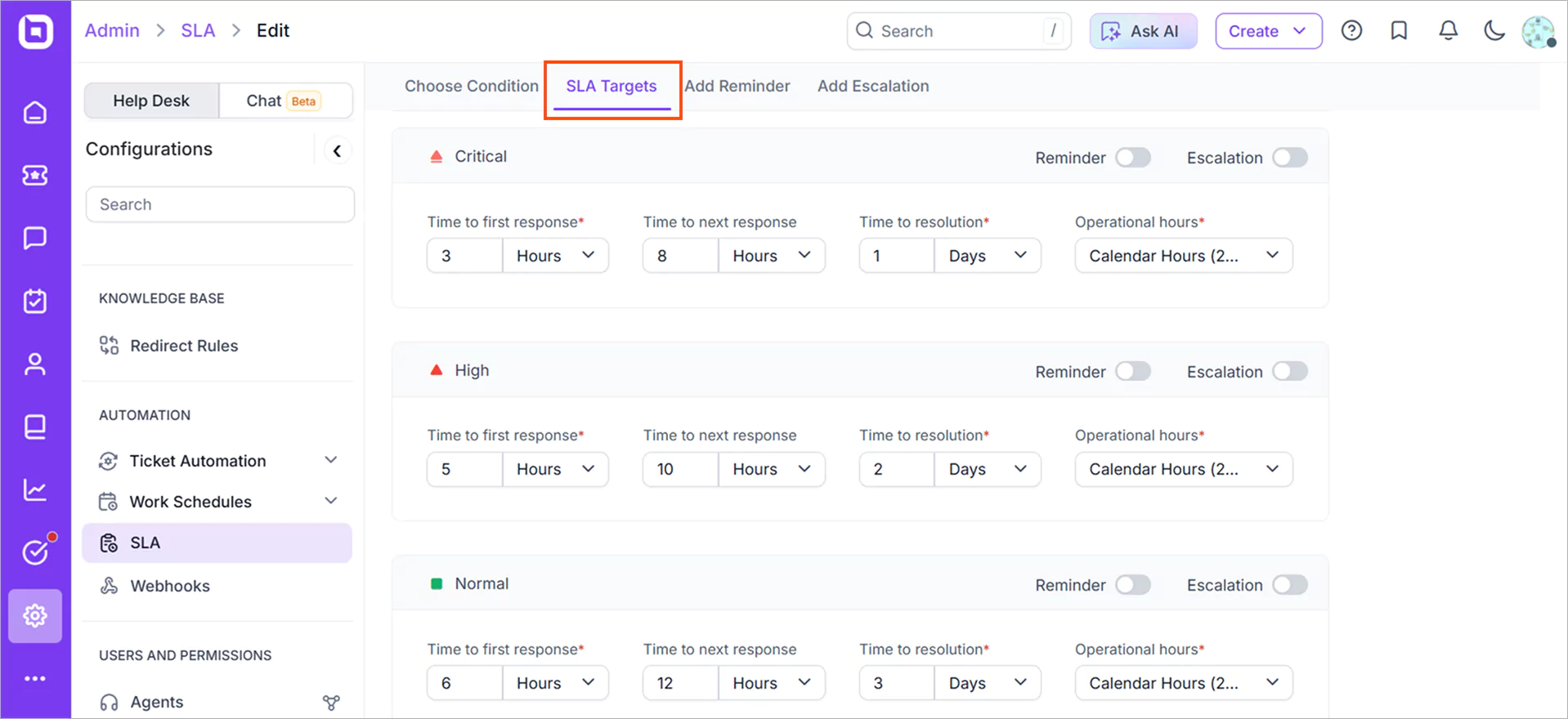
Available services
This section includes information about all the services provided to customers. In addition to the listed services, users may require additional services such as consulting, reporting, and ensuring smooth operations.
As a result, you should include these additional services to create a transparent agreement.
SLA breach conditions
The SLA conditions breach when the service providers don’t complete their tasks within the allotted time. This section states the actions to be taken for the customers.
For example, in the event of a breach, the support agent’s manager could receive a notification about it so that they can take steps to solve similar issues more quickly in the future.
Keep in mind that if the conditions breach frequently, they can affect both parties’ relationships.
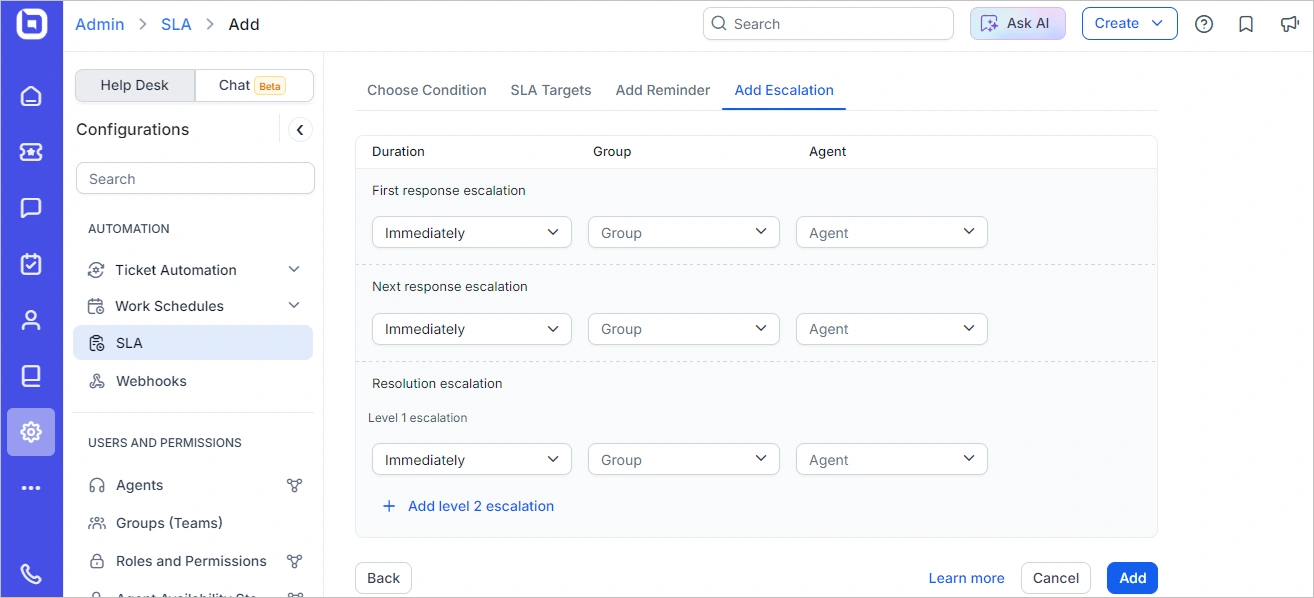
Best practices of using a service level agreement
Companies should implement specific key practices in their service-based agreements to improve client-company relations and enhance the experiences of their clients.
The following are the best practices of using an SLA in customer service that you should consider:
1. Create and maintain separate agreements for each brand
Companies should draft different agreements for each brand they own. Since they have different kinds of issues, different brands can require different resolutions or response times.
This depends on issue’s complexity, type, and volume. For this reason, it is ideal to have separate customer service contracts for each brand.
2. Track the performance of the right SLA metrics
Firstly, select the right automated help desk software for your customer service needs.
With it, you can choose useful help desk metrics that best represent the quality of your support. You can also highlight areas of concern.
Use metrics from past customer issues and aim to implement agreements that best fit the time requirements of both your customers and team. Consider the following metrics:
- First response time.
- Next Response.
- Resolution
- SLA achieved and breached.
With such metrics, using an SLA reports dashboard, support leads can have access to useful information that will help them to:
- Monitor how each support agent
- Gain insights from informative reports.
- Adjust future service-based agreements to ensure they are always achievable.
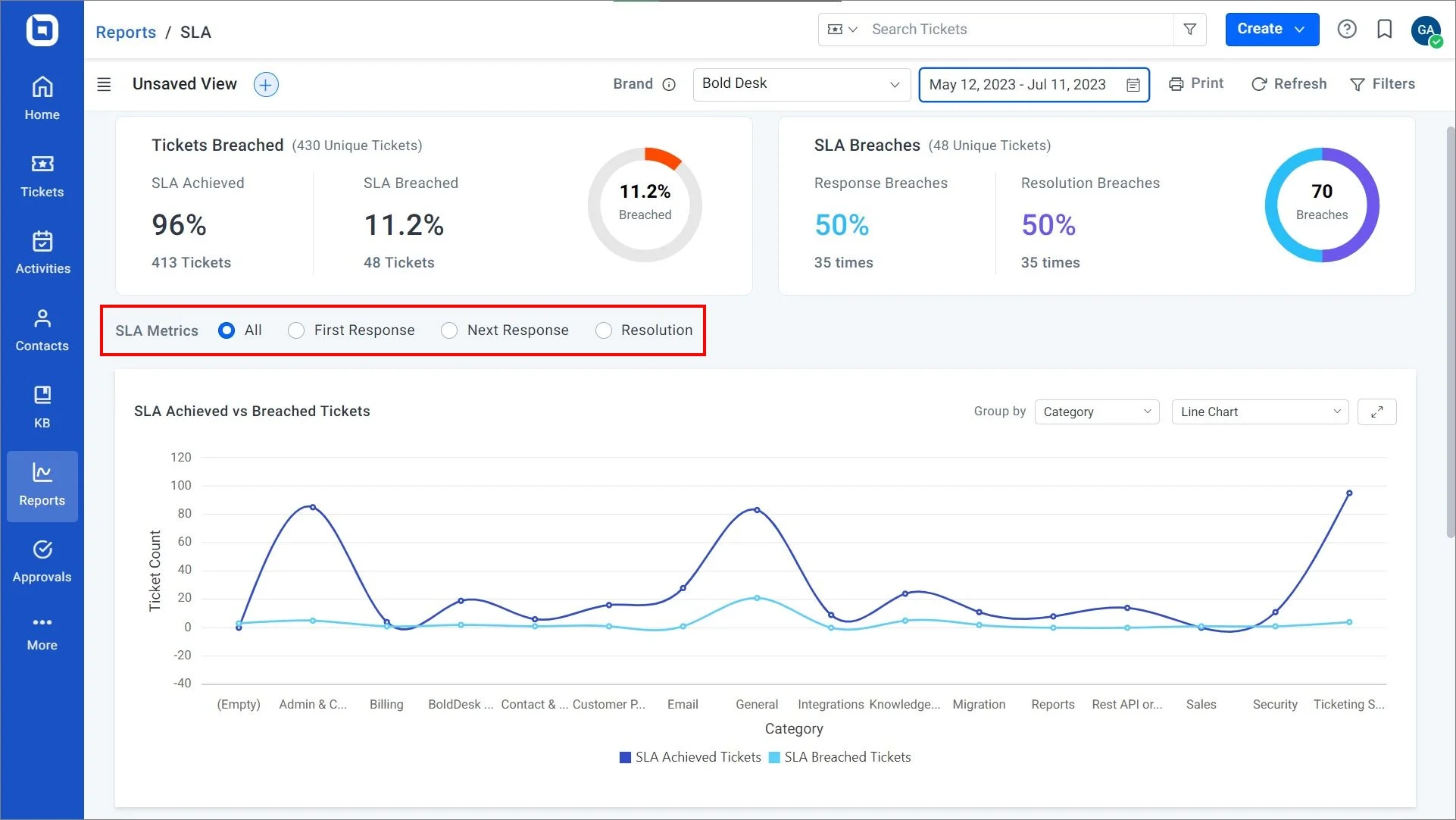
3. Set realistic targets
When you draft a help desk agreement, make sure all the standards of service and the expectations that you set up are realistic. Confirm whether you have included the right ticket requirements and the help desk tools needed in your content.
The resolution and response times agents will have to perform the required tasks should be achievable.
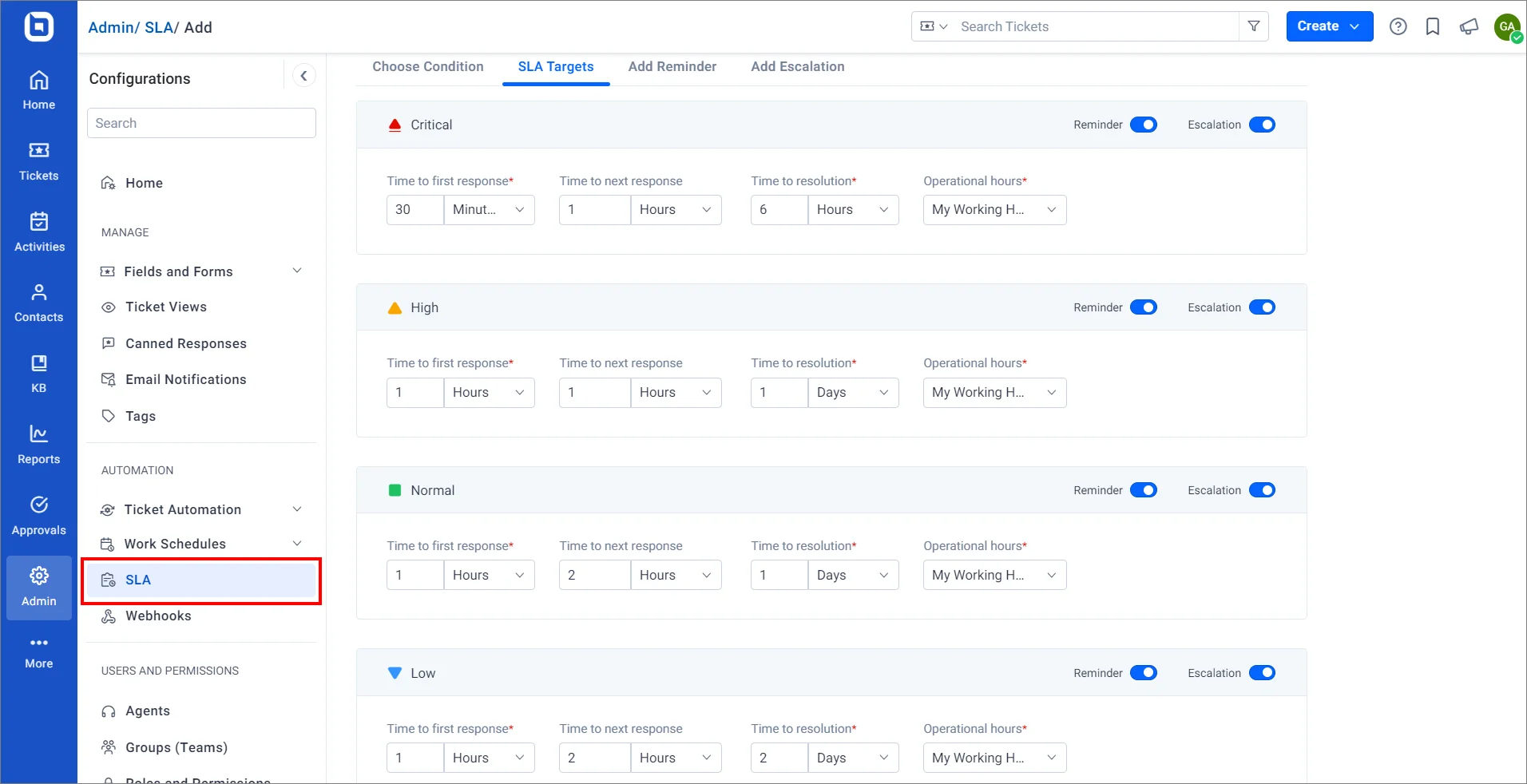
Customers prefer service providers that deliver as promised. So, companies should ensure fast and accurate delivery of high-quality services as defined by the agreements.
Achieving clearly set expectations will satisfy clients.
4. Involve your customer support team in creating the agreements
Agents are the first point of contact between the clients and the company. They are more aware of what the clients need and expect from the company.
Support agents also know which goals can be achieved and which are unrealistic. They will be of great help to management as they draft the expectations for the end users and company.
5. Clearly define the roles and responsibilities of both parties
For any SLA to be useful, the roles and responsibilities of support agents and teams should be clear and well-defined.
This makes it easy to identify the right agents to perform specific tasks and know if they meet the expectations of the clients.
In addition, clients should know their responsibilities to make the agreements they made work best.
6. Review and set SLAs that align with customer goals on a regular basis
Always strive to review and update the help desk SLA documents based on the current needs or expectations of your clients.
A recent study revealed that 70% of customers will do business with a company again if it resolves their complaints. This shows the importance of tailoring your service level agreement to accommodate diverse client needs.
This should be done on a regular basis to keep up with any changes in the needs of clients. Remove or add new customer service agreements to help your end users achieve their goals.
You should use service-based agreement metrics to determine the real goals of clients.
7. Make simple and clear agreements
When drafting this agreement, make sure the language used is simple and explains all the terms and conditions in the agreement in a clear manner.
Clients should be able to read through and understand the agreement easily. It should clear up any concerns and answer any questions they might have about the company and its services.
It is advisable to avoid jargon since it complicates the customer service SLA and not all clients can understand it.
Conclusion
A good service-based agreement should be specific, measurable, achievable, relevant, and timely (SMART). The needs of clients should be well addressed.
A good service-based agreement ensures the service providers and their clients maintain a good relationship, the productivity of agents increases, and customer satisfaction improves.
With BoldDesk, your customer-facing teams will enjoy state-of-the-art SLA metrics and integration. Try the BoldDesk free trial package for your customer support. Contact us to schedule a 30-minute live demo to experience the best help desk SLA in customer service.
Related articles
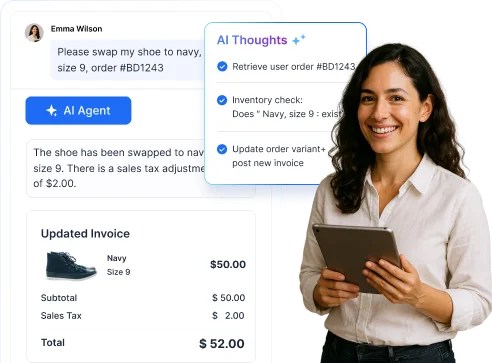


















 Email Ticketing System
Email Ticketing System Shared Inbox Software
Shared Inbox Software Multi Brand Help Desk
Multi Brand Help Desk Internal Help Desk Software
Internal Help Desk Software Trouble Ticketing Software
Trouble Ticketing Software Mobile Help Desk
Mobile Help Desk 









